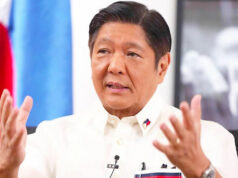Central bank reassures on BoP deficit
THE COUNTRY’S external payments gap remains manageable, the Bangko Sentral ng Pilipinas (BSP) chief said, citing robust economic activity behind the latest numbers.
BSP Governor Nestor A. Espenilla, Jr. said concerns over the balance of payments (BoP) deficit are “misplaced,” since the gap merely reflects rapid economic expansion fueled by rising investments.
The BoP measures the country’s transactions with the rest of the world at a given time. A deficit means more funds left the economy than what went in, while a surplus shows that more funds entered the Philippines.
The country posted a $1.735-billion BoP deficit as of end-October, a reversal from the $1.465-billion surplus recorded in 2016’s comparable 10 months, according to central bank data. This is also substantially wider than the $500-million deficit expected by the central bank for the entire 2017.
Sustaining a current account deficit — which measures the country’s external trade in goods — should also not be a cause of worry. Mr. Espenilla said the central bank sees the country’s current account deficit settling “well below” one percent of gross domestic product (GDP) for the entire 2017, albeit reversing from the $601-million surplus posted a year ago that was equivalent to 0.2% of GDP. The BSP expects the current account shortfall to settle $600 million this year, ending 15 years of surplus.
“[A]s observed, previous current account surpluses actually reflected low levels of investment — something also unsustainable and undesirable. Behind the deficit, the economy’s rapid growth is backed by rising investments,” Mr. Espenilla explained, citing increased importation of raw materials and machinery behind latest trade data.
“Eventually, we expect this to translate to higher productivity and exports which will support sustainability of the current account and the overall external payments position.”
The economy is well-armed against external shocks with $80.616-billion gross international reserves as of end-October, he noted.
Inflows from the steady stream of worker remittances, business process outsourcing revenues, tourism receipts, and increasing investment flows will prop up the country’s external position to balance out the increased importation.
Mr. Espenilla added that the Philippines is on track to hit the government’s 6.5-7.5% growth goal for 2017, with indications that expansion will pick up further to 7-8% over the next few years amid robust household and public spending, with a boost from the government’s planned infrastructure boom.
Philippine GDP grew by a faster than expected 6.9% in the third quarter, which pulled the nine-month pace to 6.7% from the first half’s 6.55%. “Our economic outlook is strong and robust… Further economic growth of 7-8% over the medium term is expected,” the central bank chief said, as he downplayed overheating risks.
Still, the BSP remains “vigilant” over upbeat growth in bank lending, with total credit posting a 21.1% surge in September.
On the exchange rate, Mr. Espenilla said the “modest and controlled depreciation” of the peso against the dollar simply illustrates the economy’s “structural shift from being consumption-led to being more investment-led.”
The peso averaged P50.3412 against the greenback for the first 10 months, touching 11-year-lows in October as it logged above the P51 level. The central bank has employed “tactical intervention” to smooth out excessive swings during day-to-day trading. — Melissa Luz T. Lopez



